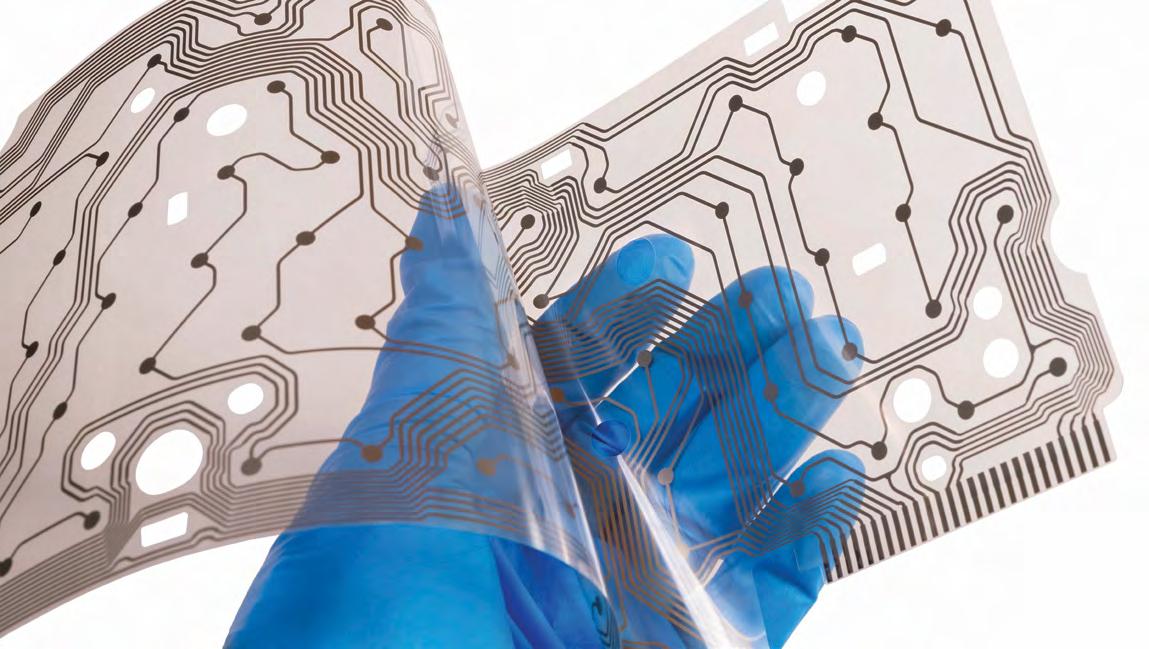
4 minute read
TECHNOLOGY
Mohammad Shihab, Managing Director, Maersk Saudi Arabia
NEW TRENDS TO DRIVE THE TECH SECTOR IN 2021
Advertisement
Damo Academy, Alibaba Group’s research initiative, shares its forecast of the top 10 principal trends that will shape the tech industry for the year
echnology is constant-
Tly evolving offering better solutions with the passing of time. As we progress into the new year, fresh ideas hit the market from the application of third-generation semiconductor materials, AIdriven R&D of medicines and vaccines, to automatic optimisation of data management system and data intelligencepowered agriculture.
Technology breakthroughs are expected to accelerate and make impacts across all sectors in the economy and the society at large.
Third-gen semiconductor materials
These products represented by gallium nitride (GaN) and silicon carbide (SiC), boast high temperature resistance, high breakdown voltage, high frequency, high power, and high radiation resistance. In recent years, breakthroughs in material growth and device fabrication have helped reduce the costs of third-generation semiconductor materials. In the Middle East, countries such as the UAE and Saudi Arabia have already started deploying 5G networks.
Quantum error correction and quantum computing
In 2020, investors worldwide flocked to the quantum computing field, related technologies and ecosystems thrived, and numerous quantum computing platforms rose to prominence. In 2021, this trend will garner further attention from all corners of society. Quantum computing must deliver enough value to make it worthwhile. The mission in the ‘postquantum-supremacy’ era must be aligned across the industry: to tackle critical scientific and engineering problems through collaborative innovation and to pave the way for quantum error correction and practical utility, two milestones in quantum computing.
Carbon materials to boost growth of flex circuits
Flexible electronics deliver stable performance even after mechanical deformations such as bending, folding, and stretching. They are favoured in wearable devices, electronic skins, and flexible screens. In the past, flexible materials were simply not flexible enough or could not compete with rigid
silicon-based materials. In recent years, ground-breaking developments in carbonbased materials have allowed flexible electronics to go far beyond their previous capabilities.
AI accelerates R&D of medicines and vaccines
Artificial intelligence (AI) technology has been widely adopted to interpret medical images and manage medical records while its application in vaccine development and the clinical research of drugs is still in the pilot stage. As new AI algorithms are emerging and computing power is reaching new heights, this technology will make it easier to complete R&D of medicines and vaccines that were previously very time-consuming and costly.
Brain-computer interface technology
This tech is essential for new-generation human-machine interactions and collaborative intelligence between humans and machines. It is the pillar and driving force of neuroengineering. It analyses how the human brain works from a higher dimension. A brain-computer interface forms a direct communication pathway between the brain and an external device. It acquires, analyses, and translates brains signals to control machines. In the future, brain-computer interface technology will help control robotic arms more precisely than ever before and help patients who are fully conscious but cannot speak or move to overcome their physical limitations.
Data processing to become autonomous
The rapid development of cloud computing and exponential growth in the amount of data have posed daunting challenges to computing task processing, storage cost control, and cluster management during traditional data processing. AI and machine learning will be adopted in a variety of fields, such as intelligent cold/ hot data separation, anomaly detection, intelligent modeling, resource scheduling, parameter tuning, stress testing data generation, and index recommendation.
Cloud technologies will reshape IT systems
Long product development cycles and low R&D efficiency in traditional software development have long been a source of pain. Cloud-native architectures featuring distribution, scalability, and flexibility look to be the cure. They allow enterprises to utilise and manage their heterogeneous hardware devices and cloud computing resources more effectively. Cloud-native methodologies, tool sets, best practices, products, and techniques allow developers to focus only on creating new applications.
Agriculture will be powered by data intelligence
New-generation digital technologies, including the Internet of Things (IoT), AI, and cloud computing, are being applied to the agriculture industry throughout the production process to retail. NewCloud-native methodologies, tool sets, best practices, products, and techniques allow developers to focus only on creating new applications.

generation sensors help obtain real-time farmland data. Big data analytics and AI expedite the processing of large amounts of agricultural data. Agricultural practitioners can monitor crops, implement precision breeding, and allocate environmental resources on demand. In addition, technologies such as 5G, IoT, and blockchain are utilised to control and trace the transportation of agricultural products, ensuring their safety and reliable delivery.
Industrial intelligence grows leaps and bounds
Industrial intelligence has been mainly used to meet partial requirements because its implementation is costly and complicated. After the outbreak of COVID-19, the remarkable resilience of the digital economy drew great attention from enterprises, digital technologies developed and spread rapidly, and more investments were injected into the construction of new infrastructure. These factors helped build a picture in which we can see industrial intelligence leap from single-point implementation to industry-wide implementation. It will make an impact on a large scale, applying to the supply chain, production, asset management, logistics, and sales.
Future cities to depend on intelligent operations centres
Smart city initiatives were first launched a decade ago and have sparked a significant improvement in city governance through digital technologies. When coping with the COVID-19 outbreak, a number of smart cities faced challenges. This is why intelligent operations centres are widely accepted and deployed to maximise the usage of data resources and promote global, fine-grained, and real-time governance and public services. By keeping ‘digital twins’ of cities, intelligent operations centres consider each city as a unified system and deliver city-wide services capabilities.





